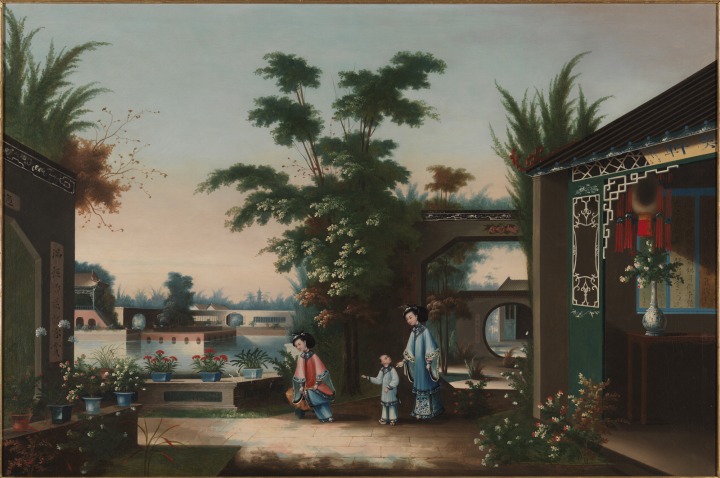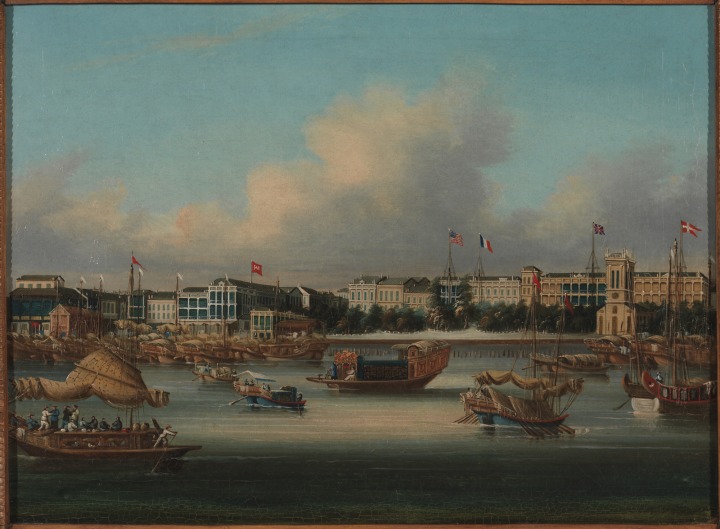China Trade Paintings
Fantasy Materialized: The Chineseness for Westerners
Producing art for the European export market from the end of the 18th century to the first half of the 19th, Chinese painters utilized traditional techniques while at the same time incorporated originally Western styles of painting in oils and water colors with perspective and shading. They painted on cotton, silk, paper, ivory or porcelain, appealing to Western tastes and popular topics with scenes from the daily lives of tradesmen and their premises at the thirteen factories in the southern port of Canton (present-day Guangdong) or the Shanghai Bund, as well as royal court functions and peculiarly Chinese settings such as tea or silk production or the more exotic foreign depictions of the emperor or court ladies. There are few existing works but city views of trade route ports to the West such as Singapore and Calcutta (present-day Kolkata) were also produced around this time. Before the Opium War (1840–42) production was centered on Canton, the only Qing Dynasty trading port open. After the conflict, however, workshops were set up in both Hong Kong and Shanghai.
[Rawanchaikul Toshiko]

Artist Unknown (China Trade Painting) "The House of Conseequa, a Chinese Merchant, Canton #1 early 19th century" oil on canvas

Artist Unknown(China Trade Painting) "The Hongs, Canton" c. 1850 oil on canvas
